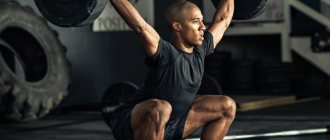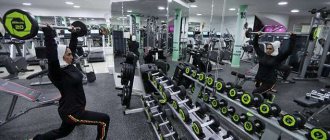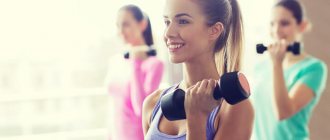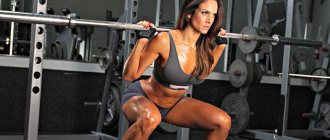Exercising with weights allows you to build an ideal body with pronounced relief, which all modern boys and girls dream of. But there are also pitfalls to weight training that you should be aware of when planning to join a gym. Let's find out what the pros and cons of working out in the gym are to determine whether this type of exercise is right for you. And if you are looking for a good gym for regular exercise, then come to the Multisport club, where you will find the best conditions for training.
Features of training in the gym
Classes in the gym involve performing weight-bearing exercises on different muscle groups. Weights can be in the form of free weights (barbells and dumbbells) or placed on exercise machines. Beginners are advised to start with machines, as free weights require a certain level of training in order to perform the exercises correctly.
Classes in the gym begin with a joint warm-up and a short cardio session on a treadmill, elliptical or exercise bike. This will prepare your body for stress and prevent injury. Then you can move on to the simulators. For beginners, at the first stage, the full-body format is recommended for harmonious pumping of all major muscle groups. Advanced athletes divide their weekly workouts into splits, during which they specifically target specific muscle groups.
Classes in the gym are aimed at developing the physical strength of the body. This is where a strong muscle frame is built, which in the future will turn into a beautiful relief that you can show off on the beach.
The key advantage of the gym is the ability to build your dream figure and maintain it for a long time. But if you are a beginner, it is recommended to exercise under the supervision of a personal trainer. Exercising on your own without experience can be harmful, as you will not know how to perform the exercises correctly, which can lead to injury. After training with a trainer for some time, you can begin independent training, in which the main thing is regularity.
At the Multisport club you can sign up for individual training with a personal trainer who will help you achieve the best results in strength training.
For what tasks are simulators needed?
Vasyl Dolmatov/iStock
Going to the gym is always fraught with anxiety. Especially if this event is planned for the first time. I will give you the most popular and effective exercise equipment for the gym and at home.
All gyms can be divided into zones corresponding to the types of load:
- cardio (the main goal is to lose weight and awaken the body’s endurance reserves);
- strength (exercise machines help build muscle mass and create tone).
Inventory can also be divided into several categories:
- exercise machines - this includes all devices that target certain muscle groups, which also includes working with weights;
- fitness equipment - hoops, sets of dumbbells of different weights, balls, steppers and other female assistants;
- power sports equipment - barbells, bars and weights.
Main types of simulators
Each gym has several types of exercise equipment. This helps to get the maximum in one room and not look for other options that enhance the effect.
Simulators are divided into the following types:
- cardio equipment (orbitracks, treadmills and other machines that increase endurance);
- lever - their design includes free weights, which can be adjusted at your own discretion (or using the advice of an experienced instructor);
- block - the weight is built-in, there is a movable pin that helps to adjust it;
- simulators in which the main driving force is the weight of the athlete;
- power frames (the second name is “registered”, as a rule, they have their own name).
Types of simulators for specific purposes
All exercise machines can be roughly divided into muscle segments that they pump. Here are the main ones:
1. For the abs
The following exercise machines will help strengthen your abdominal muscles and make your stomach firm and flat:
- Incline bench.
- Gymnastics video.
- Swedish wall with parallel bars.
2. For biceps and triceps
Two-thirds of the arm's surface area is the triceps
To pump it up, you need to pay attention to free weights, pick up the barbell more often and do more approaches. The best helpers will be:
- Block frame.
- Scott's bench.
- Bars.
3. Exercise machines for the back, shoulders and trapezius
The largest muscle layer, consisting of several subgroups, is the back. It is possible to pump it up correctly with the following simulators:
- T-neck design.
- Block simulator.
- Extension bench.
Triceps training will be effective only if each of them is thoroughly worked out separately. Among the simulators are:
- Regular weights (or dumbbells with the correct weight).
- Deltoid butterfly.
4. Pectoral muscles
Working out the pectoral muscles is a guarantee that in a couple of years the chest will be toned (if, of course, you exercise correctly and regularly).
Popular exercise equipment for developing pectoral muscles:
- Hammer trainer.
- Crossover.
Benefits of the gym
Strength training is the most effective way to strengthen muscles and get a beautiful figure. Cardio exercise, including running and aerobics, primarily strengthens the cardiovascular system and makes the body more resilient. But don't be surprised if problem areas remain the same after long periods of cardio.
Only in the gym will you really be able to get rid of the “sides”, “breeches” on the hips, “orange peel” or tummy. This happens because during strength or anaerobic training, muscles are strengthened and metabolism is accelerated. For example, this is the main advantage of circuit training in the gym.
The acceleration of metabolism continues the next day after training, which does not happen when jogging. This means that from strength training you will lose extra pounds some time after exercise, which is very beneficial. But this is not the only advantage of the gym. Strength training with weights brings enormous benefits to the body. Let's look at what other advantages of training in the gym:
- Strengthening the muscle frame;
- Increased strength and development of physical abilities of the body;
- Acceleration of metabolism and improvement of blood circulation in tissues;
- Stimulation of collagen synthesis, which prevents premature aging;
- Strengthening immunity and supporting health;
- Relief from back pain through the development of spinal stabilizer muscles;
- Losing weight and working on problem areas;
- Psychological relief and mental relaxation.
In addition, in the gym you will meet like-minded people, learn new things and get a great fitness hobby for life.
Home workouts based on basic exercises
The home workout regimen includes the following mandatory exercises:
- squats;
- push ups;
- pull-ups;
- dumbbell press;
- twisting;
- bar
Various variations of basic exercises allow you to increase the level of difficulty and develop physical fitness. Home training begins with a warm-up and cardio exercise, after which you can begin strength exercises. The list of exercises for training at home is quite extensive and allows you to create a functional workout of any complexity based on various variations of basic squats, lunges, push-ups, crunches and other movements.
Strength training for men is necessary to get elastic and developed muscles, as well as increase the body's endurance. A set of physical exercises at home should consist of complex exercises and give a serious load, and running in the fresh air is recommended as cardio exercise.
Classes for beginners
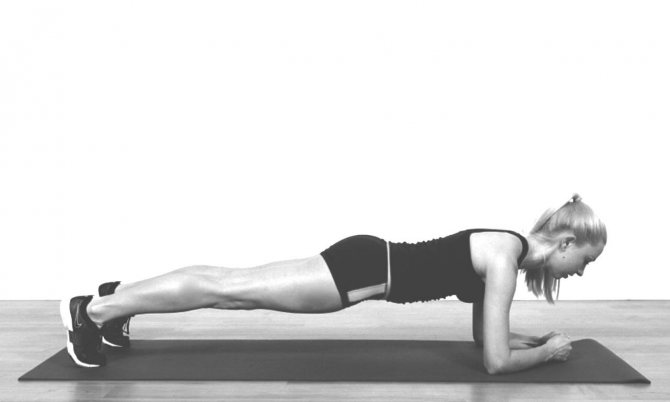
The training program for beginners at home is aimed at strengthening muscles and learning the technique of performing exercises. After the mandatory warm-up, perform the following exercises:
- squats;
- lunges forward and backward;
- knee push-ups;
- standing dumbbell press;
- twisting;
- plank 30 seconds.
Each exercise is performed 15-20 times in 2 approaches, resting between approaches for no more than a minute. At the end of the class, a stretching routine is performed. The load is increased gradually, starting with training once a week, increasing to 2-3. On days without training, it is useful to walk in the fresh air and walk at a brisk pace.
Strength training for men
Strength exercises that develop large muscle groups at the same time are recommended for men. Great for practicing at home:
- pull-ups on the horizontal bar with a wide grip - to form a sculpted back and strong arms;
- push-ups - train the triceps and core muscles;
- lying dumbbell fly, performed on a bench or using two stools - pumps up the chest muscles;
- Dumbbell press for biceps and triceps - forms sculpted arms;
- squats - train your legs and abs, if you take dumbbells, then also your arms;
- various types of crunches - for the abs.
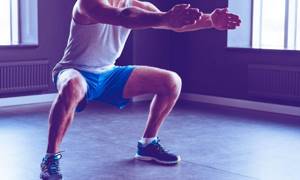
With good physical preparation, the exercises are performed “all the way”, that is, the maximum possible number of times. Beginners first need to focus on the correct technique and do 10-15 repetitions.
Circuit training
A home workout program for men also includes circuit training, where a group of exercises is performed one after another several times in a row with a short rest interval between sets. Such exercises are aimed at drying the body and burning excess fat.
Increasing muscle mass with home exercises is more difficult than in the gym, but it is possible. The main thing is regularity of classes and a gradual increase in load, performing each exercise the maximum number of times or using circuit training. The lesson plan is based on basic exercises, but of increased complexity. Every week, increase the number of repetitions and circles.
Apps and videos for home workouts
Special applications, for example, Sworkit Lite, Nike Training Club, 30 days, or programs for home workouts that you can download, for example, this one for men, will help you create a training plan, control your technique, and increase loads.
Are there any downsides to weight training?
Despite the huge number of advantages of strength training, there are also disadvantages that those who are planning to join a gym should remember:
- You will have to exercise regularly, otherwise you will not see changes in your body;
- It is necessary to monitor your diet, otherwise you may gain weight;
- You should acquire powerful motivation, because the process of building a beautiful body is not quick;
- There are contraindications (problems with the spine, heart, diseases of internal organs, obesity, pregnancy and others).
In general, there are much fewer disadvantages than advantages, so feel free to sign up for a gym and start working on yourself.
How to train at home
Working out at home without equipment is a simple and proven method for both losing weight and increasing muscle mass. In the first case, it is best to perform exercises from various fitness programs available, for example, on the YouTube platform. There you can find entire training programs, thanks to which you do not need to waste time preparing your own training plan.
If you want to develop your muscles with home exercises, you don’t have to have a lot of special equipment. Especially for beginners, where bodyweight exercises are a good option at this stage. It is recommended to perform so-called peripheral training, that is, exercises for all muscle groups.
People starting training, as a rule, have never loaded their muscles too much before, so it is necessary to prepare them accordingly.
Strength training at home for beginners should last about 50 minutes. At this time, the warm-up is already included, which is the main element of any exercise. It should last about 10 minutes, and within its framework you can perform exercises such as:
- step in place
- jumping
- sliders
- squats
- hand rotation
- leg rotation
- stretching
In the main workout, it is recommended to perform 10-12 different types of exercises, such as:
- push-ups on the floor
- twisting
- squats
- lunges
- push-ups on chairs
- horizontal scissors
- raising arms with a chair
- squats on one leg (alternating left and right)
- ascent and descent from the platform (if the house has a platform)
The number of repetitions of individual exercises depends on their type and on the capabilities and preparation of the person. In the beginning, do not overdo it with loads and perform exercises at an intensity that your body can easily tolerate.
Stretching exercises
Home gymnastics always ends with stretching exercises. They are performed at a slow pace and are accompanied by deep breathing. Set of exercises:
- Tilt your head back, stretching the front of your neck. Then tilt it to the left. To enhance the effect, you can place your left palm on your ear without pressing too hard. Hold the position for a few seconds and repeat in the other direction.
- Place your hands behind your back and grab the wrist of the other with one of them. Bend your elbows, raise your wrists a little higher. Bend your chest forward slightly and feel the muscles in the front of your shoulders stretch. Stay in this position for a few seconds.
- Stand in the doorway, lean your elbows on the doorframes and push your chest forward, stretching your muscles. Hold for a couple of seconds and perform several repetitions.
- Sit on the floor, move your right leg forward, your left leg back. Bend your knees at a right angle. Place your right hand on the floor, raise your left hand above your head. Pull your left leg back and down, tilt your body forward, twisting towards your right leg. Repeat on the other side.
- Get on your knees, stick your chest forward and straighten your spine. Lean back, put your hands on your heels, look up. Try to bend in the thoracic region.
- Lie on your back, bend your knees and raise your legs. Place the ankle of the right limb on the knee of the left. Apply gentle pressure to deepen the stretch. Repeat on the other leg.
- Lie on your stomach, lift one leg and grab your ankle with your hands. Pull the bent limb towards the buttock without lifting the thigh from the floor. Perform the exercise on the other leg.
- Stand up straight, take a step forward, bend your body parallel to the floor. The front leg can be kept either straight or bent. Stay in this position and repeat on the other leg.
- Sit on the floor, straighten your back (you can lean against the wall), fold your legs in front of you with your feet facing each other. Try to lower your knees to the floor without pressing on them with your hands. Hold for a few seconds.
This complex contains one exercise for each muscle group. For maximum effectiveness, it is recommended to stay in each pose for 30 seconds to 1 minute. At this time, you can remain still or make soft springing movements.


